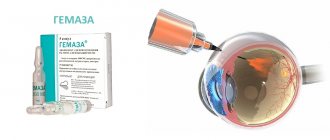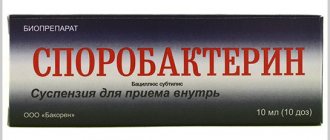The use of dydrogesterone for the treatment of threatened miscarriage in the first trimester
V.M. Sidelnikov Federal State Scientific Center for Obstetrics, Gynecology and Perinatology named after. V.I.Kulakova, Moscow
Currently, many studies emphasize that the approach to the treatment of threatened miscarriage in women with a history of recurrent pregnancy loss is empirical, since there is not a single large randomized study of different treatment options for miscarriage.
However, a number of studies have shown the role of gestagens in maintaining pregnancy when it is threatened with termination, and this interest is due to an increased understanding of the immunomodulatory role of progesterone in maintaining pregnancy.
In recent years, numerous studies have been conducted to assess the condition of the endometrium during miscarriage from the point of view of immune and hormonal relationships. Due to the fact that in the endometrium during the process of implantation and placentation there is an interaction between these systems, and in case of pregnancy disorders both hormonal and immune mechanisms can be involved, understanding these problems is extremely important from a clinical point of view.
Under the influence of steroid hormones during pregnancy, the level of natural killer (NK) cells in the blood increases significantly, which very quickly migrate to the endometrium. It is believed that their increased level should provide immunosuppression at the site of implantation, growth and development of the trophoblast. However, NK cells in peripheral blood and endometrium differ significantly in the expression of surface antigens.
In peripheral blood, NK cells make up about 10-15% of lymphocytes and have unique functional properties. Based on the expression of CD56+ antigen on the surface, cells are divided into two populations. The majority of them (90%) carry CD56+16+ markers and about 10% carry CD56+16- [1].
Cells with CD56+16+ markers are more cytotoxic, while CD56+16- are the main source of regulatory cytokines and growth factors. During pregnancy, under the influence of maternal progesterone, and possibly prolactin, the level of CD56+16+ cells decreases significantly and their cytotoxicity decreases [2].
T-helper lymphocytes (CD4+) are also influenced by endogenous progesterone. In the middle of the second phase of the cycle and during pregnancy, receptors for progesterone appear on lymphocytes; T cells, under the influence of progesterone, produce progesterone-induced blocking factor (PIBP) [3], which inhibits the cytotoxicity of NK cells [4].
T-helper lymphocytes are divided into Th1-producing pro-inflammatory cytokines (interleukins-2 - IL-2, tumor necrosis factor-α, etc.) and participate in the cellular immune response. Th2 produces regulatory cytokines (IL-4, IL-5, IL-6, IL-10, etc.) and stimulates humoral immunity.
It has been established that endogenous maternal progesterone can directly affect the differentiation of T cells, suppressing the Th1 pathway and enhancing the differentiation of T cells into the Th2 pathway [5]. It is believed that Th2 cells inhibit NK cells, their binding, cytotoxicity, proliferation and direct their production according to the Th2 type [6, 7]. In the endometrium, the level of NK cells varies according to the phases of the cycle. They make up approximately 10% of the number of stromal cells in phase I of the cycle, about 20% in phase II and 30% in early pregnancy [8]. During pregnancy, up to 70% of leukocytes in the endometrium are NK cells, called large granular lymphocytes, CD56+16- and have differences in the expression of some genes: CD69, galestin-1, glycodelin, growth factors necessary for the formation of the placenta.
It is assumed that endometrial NK cells are involved in the decidualization of the endometrium, in the processes of implantation, growth and development of the trophoblast.
When the level of progesterone in women with NLF decreases before pregnancy (of hormonal origin or due to decreased endometrial receptivity), the aggressive clone of cells and the production of proinflammatory cytokines increase, which leads to termination of pregnancy. In chronic endometritis, which is determined in 70% of women with a history of recurrent pregnancy loss, a significantly increased level of cytotoxic cells in the endometrium is noted [10-13]. Even with a normal level of progesterone in the blood, it is not always possible to suppress cytotoxicity and restore the normal balance of immune cells, which leads to termination of pregnancy.
For a long time, the use of progesterone was not recommended in a number of countries, as it was believed that it has a virilizing effect on the female fetus (Working Group WHO, 1984).
However, recent studies have shown that progesterone plays an exceptional role during pregnancy: it prepares the endometrium for trophoblast invasion, ensures uterine peace by reducing the synthesis of prostaglandin and oxytocin, and has a significant immunomodulatory effect.
Currently, two drugs are used in Russia to treat the threat of miscarriage: micronized progesterone and dydrogesterone - Duphaston®. Both drugs are obtained from the same plant material. Additional processing of “natural” progesterone increased the bioavailability of Duphaston by 10 times, so Duphaston® effectively preserves pregnancy at a minimally low dose. During pregnancy, both drugs do not have an androgenic effect, since there is no connection with androgen receptors, do not have an anabolic effect, do not affect the lipid profile, carbohydrate metabolism, blood pressure, do not affect hemostasis and do not have a thrombophilic effect.
However, due to the high level of binding ability of utrogestan to glucocorticoid receptors and especially to mineralocorticoid receptors (AWolf, 2002), it has pronounced sedative and hypnotic effects. Synthetic progesterones (MPA, levonorgestrel, norethisterone) are not used during pregnancy due to the androgenic effect.
It is advisable to carry out therapy with progesterone drugs until the 16th week of pregnancy. After this period, the placenta synthesizes sufficient levels of progesterone to maintain pregnancy.
Dydrogesterone (Duphaston®) is a unique gestagen for maintaining pregnancy, since, in addition to the gestagenic effect, it has an immunomodulatory effect on the mother-fetus system, similar to endogenous progesterone.
According to J. Szeheres-Bartho, the use of dydrogesterone reduces the abortive effect by reducing the synthesis of prostaglandins by inhibiting the release of arachidonic acid [14]. In the work of R. Raghupathy et al. the use of dydrogesterone increases the progesterone-induced blocking factor, reduces the level of pro-inflammatory cytokines and provides a more favorable course of pregnancy [15].
Research by M.El-Zibdeh has shown that the use of dydrogesterone to maintain the corpus luteum significantly reduces the incidence of pregnancy loss and is more effective than the use of hCG drugs, according to the author, due to the immunomodulatory effect of dydrogesterone [16].
In the department of therapy and prevention of miscarriage, dydrogesterone (Duphaston®) has been used for more than 10 years. Indications for prescribing dydrogesterone are the following clinical situations:
1. Habitual pregnancy loss caused by defective luteal phase of hormonal genesis.
According to ultrasound, a thin endometrium is noted in the middle of phase II of the cycle, but blood flow in the basal and spiral arteries is not impaired. For this pathology, cyclic hormonal therapy with Femoston 2/10 for 2-3 cycles is carried out before pregnancy, if necessary, stimulation of ovulation and to maintain the corpus luteum, Duphaston® is prescribed 10 mg 2 times a day from the II phase of the fertile cycle. If, during therapy, there is a threat of miscarriage, the dose of dydrogesterone is increased to 30 or 40 mg until the threat is eliminated. If, according to ultrasound, chorionic hypoplasia or a lag in the size of the fetal egg from the gestational age is noted, the dose of dydrogesterone can also be increased to 3-4 tablets per day and at the same time placental insufficiency is prevented under the control of a hemostasiogram and with the use of antioxidants ( α-tocopherol, omega-3 - PUFAs, carnitine) and actovegin.
2. Habitual pregnancy loss caused by the presence of chronic endometritis.
According to our data, 70% of women with recurrent miscarriage outside pregnancy are diagnosed with chronic endometritis. At the stage of preparation for pregnancy, antibacterial and immunomodulatory therapy is carried out to reduce the cytotoxic activity of NK cells in the endometrium and reduce the level of pro-inflammatory cytokines. Against the background of this therapy, dydrogesterone (Duphaston®) is prescribed from the 16th to the 26th day of the cycle for 2-3 cycles in a row for immunomodulatory purposes. When the level of cytotoxic cells in the peripheral blood is normalized (CD56+, CD56+16+), and the level of γ-interferon in the blood serum decreases, pregnancy can be permitted with continued administration of dydrogesterone 10 mg 2 times a day. If there is a threat of termination of pregnancy, it is advisable to reduce the level of cytotoxic cells by administering immunoglobulin intravenously in a dose of 2.5 g twice every day.
3. In case of miscarriage caused by thrombophilia,
Before pregnancy, transvaginal ultrasound often reveals a thin endometrium with a lack of blood flow in the basal and spiral arteries. At the stage of preparation for pregnancy, it is necessary to improve hemodynamics in the uterine vessels with the help of vasoactive drugs, which are prescribed taking into account the cause of thrombophilic disorders.
Prescribing estrogens to such patients is inappropriate due to thrombophilia, and prescribing dydrogesterone before pregnancy is quite justified to ensure vasodilation and reduce the synthesis of prostaglandins. Duphaston® is used 10 mg 2-3 times a day until the 16th week of pregnancy.
4. Threatened miscarriage with the presence of retrochorial hematoma.
To ensure uterine rest (reduced prostaglandin synthesis) and reduce the rejection reaction, dydrogesterone (Duphaston®) is prescribed at a dose of 10 mg 3-4 times a day until bleeding stops and a hematoma is formed. Then the dose of dydrogesterone can be reduced to 20 mg/day.
5. According to our data, up to 42% of women with recurrent miscarriage have antibodies to progesterone, and 10% of them have a high level of antibodies
. The presence of antibodies to progesterone has a clinical manifestation in the form of dysmenorrhea, thin endometrium, and during pregnancy, chorionic hypoplasia is observed with the subsequent development of placental insufficiency. It is not advisable to prescribe micronized progesterone to this category of pregnant women, since, apart from increasing sensitization, no effect of treatment is observed. A change in the progesterone molecule after additional processing during the synthesis of dydrogesterone (Duphaston) allows treatment with this gestagenic drug with a good clinical effect.
6. Among the causes of early pregnancy losses, a significant place belongs to alloimmune disorders,
in which an increased level of NK cells with cytotoxic activity (CD16+, CD56+16+, CD56+16+3+) is determined in the peripheral blood, along with the compatibility of spouses for three or more loci of the HLA system. In the preparation for pregnancy, in addition to lymphocytoimmunotherapy, Duphaston® is additionally prescribed from the 16th day of the fertile cycle, and therapy continues at a dose of 20 mg/day until the 16th week of pregnancy with a very good clinical effect.
Thus, our experience of using Duphaston for 10 years has shown the high effectiveness of this drug in maintaining pregnancy when there is a threat of termination.
Literature
1. Cooper MA, Fehniger TA, Caligiuri MA The biology of human natural killer-cell subsets. Trends Immunol 2001; 22: 633-40. 2. Baral E, Nagy F, Berczi I. Modulation of natural killer cell-mediated cytotoxicity by tamoxifen and estradiol. Cancer. 1995; 75:591-9. 3. Szekeres-Bartho J, Barakony A PolgarB et al. The role of T-cells in progesterone-mediated immunomodulation during pregnancy: a review. Am J Reprod Immunol 1999; 42:44-8. 4. Polgar B, Kispal G, Lachmann M et al. Molecular cloning and immunologic characterization of a novel cDNA coding for progesterone-induced blocking factor. J Immunol 2003; 171:5956-63. 5. Miyaura H, Iwata M. Direct and indirect inhibition of Th-1 development by progesterone and glucocorticois. J Immunol 2002. 168. 1087-94. 6. Deniz G, AkdisM, Aktas F et al. Human NKI andNK2 subsets determined by purification of IFN-secreting and IFN-nonsecreting NK cells. Eur J Immunol 2002; 32: 879-84. 7. Loza MJ, Peters SP, Zangrilli JG, Perussja B. Distinction between IL-13+ and IFN-+ natural killer cells and regulation of their pool size by IL-4. Eur J Immunol 2002; 32:413-23. 8. Bulmer JN, Morrison L, LonglelowM et al. Granulated lymphocytes in human endometrium: histochemical and immunohistochemical studies. Hum. Reprod. 1991; 6: 791-8. 9. Dision Ch, Giudice L. Natural killer cells in pregnancy and recurrent pregnancy loss: Endocrine and Immunology perspectives. Endocrine Reviews 2004; 26 (1): 44-62. 10. Gladkova K.A. The role of sensitization to progesterone in the clinic of recurrent miscarriage. Author's abstract. dis…. Ph.D. honey. Sci. M., 2008. 11. Gnipova V.V. Optimization of pathogenetic therapy in women with recurrent miscarriage in the first trimester based on a study of the condition of the endometrium. Author's abstract. dis…. Ph.D. honey. Sci. M., 2003. 12. Tetruashvili N.K. Early pregnancy losses (immunological aspects, ways of prevention and therapy). Author's abstract. dis…. doctors med. Sci. M., 2008. 13. Shurshalina AV. Chronic endometritis in women with pathologies of reproductive function. Author's abstract. dis…. doctors med. Sci. M., 2007. 14. Szekeres-Bartho J, Barakonyi A Par G et al. Progesterone as an immunodulatory molecule. Int Immunopharmacol 2001; 1 (6): 1037-48. 15. Raghupathy R. Progesterone-receptor mediated immunomodulation and antiabortive effects (II). The role of a protective Th-2 bias. Inter. Soc. Gynecol. Endocrin. Congress. Hong-Kong, 2001. 16. EL-Zibdeh M. Randomized clinical trial comparing the efficacy of dydrogesterone, human chorionic gonadotropin or no treatment in the reduction of spontaneous abortion. Inter Soc Endocrine Congress. Hong Kong, 2001.
According to recent data, progesterone and its effect on progesterone receptors in the endometrium play an important role in preventing spontaneous abortions and maintaining pregnancy in the early stages [1].
In early gestation, progesterone produced by the corpus luteum plays a role in preparing the endometrium for implantation, and later in maintaining the growth and development of the embryo.
In this regard, progesterone preparations are widely used in the treatment of miscarriage. Today, the role of progesterone in maintaining pregnancy in the second and third trimesters is being actively studied [1]. It has been established that progesterone affects not only the myometrium and amniotic membrane, but also the condition of the cervix, controlling its maturation [2].
There is an opinion that the use of progesterone preparations and its analogues is one of the promising methods of maintaining pregnancy in women with both hormonal and immunological problems of miscarriage [1]. The physiological effects of gestagens include secretory transformation of the endometrium, inhibition of estrogen-induced proliferation of the uterine mucosa and preparation of it for blastocyst implantation, ensuring “rest” of the endometrium by reducing its sensitivity
to oxytocin. The biological effects of progesterone are also very diverse. During pregnancy, this is an inhibition of the production of follicle-stimulating hormone, which blocks the growth of new “no longer needed” follicles; increased vascularization, proliferation and secretory activity of the endometrial glands; inhibition of T-lymphocyte-mediated tissue rejection; retention of sodium and water in the body; a decrease in the threshold of excitability of muscle fibers in the first trimester, which contributes to pregnancy; inhibition (in the II and III trimester of contractile activity of the uterus), etc. [3].
There are three ways to administer progesterone drugs into the body: oral, intravaginal, intramuscular. Oral administration of progesterone guarantees high compliance in patients, but is limited by differences in plasma concentrations depending on individual differences in the functioning of the gastrointestinal tract. When taken orally, however, side effects may occur, such as nausea, headache, drowsiness. With intravaginal use of progesterone in the uterus, a higher concentration is achieved, which allows one to obtain the expected effect with minimal systemic exposure. However, with intravaginal administration, the concentration of progesterone in the blood is lower than with oral administration. When the drug is administered intramuscularly, its optimal concentration in the blood plasma is achieved compared to oral and intravaginal administration, however, the side effects of this method of administration are local discomfort and abscesses at the injection site, which limits its use [4].
Progestogens are divided into synthetic and micronized. Micronized progesterone (Utrogestan) was developed in the 1980s. in order to improve the characteristics of progesterone preparations. Utrozhestan is a drug made from plant materials, and the progesterone molecule in it is identical to the natural one. Micronization of the active substance ensured its better solubility in water and absorption in the intestines due to its packaging in an oil suspension in a gelatin capsule. The high effectiveness of intravaginal use of micronized progesterone for threatened spontaneous abortion has been proven in numerous studies [5–7]. The high bioavailability of progesterone in Utrozhestan was achieved through the use of original micronization technology and the use of a lipophilic progesterone solvent - peanut oil with soy lecithin. The half-life of progesterone in the blood in the second (slow) phase of elimination is 16–18 hours and does not depend on the dose. In addition, chromatographic analysis showed an increase in the content of natural progesterone metabolites in plasma, among which pregnanediol, pregnanolone, 17α-hydroxyprogesterone, and 20α-dihydroprogesterone predominated. The latter itself has a fairly high progestin activity, which prolongs the hormonal effects of administered progesterone. The maximum concentration of the drug in the blood remains for 2-6 hours. The main metabolite of progesterone when used intravaginally is pregnanediol. It is important to note that with different routes of administration of micronized progesterone, the characteristics of its metabolism may cause some differences in its effects. Thus, the metabolites 5α- and 5β-pregnanolone formed during oral administration interact with gamma-aminobutyric acid (GABA) and cause the development of hypnotic, anxiolytic and anticonvulsant effects, and therefore this method of drug administration is prohibited for use. At the same time, when used vaginally, pregnanolone levels undergo minimal changes, and these effects will not be expressed [7].
In 1950, dydrogesterone (Duphaston), a stereoisomer of progesterone (retroprogesterone), was obtained. The progesterone molecule is almost completely “flat”, while the retroprogesterone molecule (Duphaston) is curved due to the change in the position of the methyl group on carbon atom 10 from the β-position to the α-position, and the hydrogen on the C9 carbon atom from the α position to the β position . There is also an additional double bond between the C6 and C7 carbons. As a result of metabolism, a pharmacologically active metabolite is formed, which has exclusively progestogenic activity. Bioavailability of dydrogesterone ─ 28% (bioavailability of estrogens is about 10%). The concentration of the drug in the blood plasma depends linearly on the dose taken in the range from 5 to 20 mg. Equilibrium concentration is achieved after three days of taking the drug. All three pharmacologically active metabolites of dydrogesterone have a retrosteroid structure and a similar profile to dydrogesterone. The main metabolite of dydrogesterone, 20-dihydrodydrogesterone, has a higher progestogenic activity than progesterone (20 times), which makes it possible to significantly reduce the dose of the drug used to treat patients and avoid a significant steroid load on the liver.
During metabolism, dydrogesterone does not undergo aromatization, and therefore it does not have estrogenic properties and does not undergo hydroxylation, which results in the absence of androgenic properties. Biological effects at the cellular level are mediated by intracellular steroid receptors. The ability of a given progestin to bind to the progesterone receptor varies greatly between compounds, which influences the biological effect of that progestin [8].
Dydrogesterone (Duphaston®) among all gestagens has the highest selectivity for progesterone receptors, which increases the effectiveness of the drug, especially for patients who have reduced sensitivity to these receptors at the time of treatment. The high selectivity of dydrogesterone (tropen exclusively to progesterone receptors) provides a good safety profile of the drug. The lack of connection of dydrogesterone (Duphaston®) with androgen, glucocorticoid and mineralocorticoid receptors determines the absence of this drug from a group of undesirable reactions that limit the use of other progesterone drugs in women [9]. It has been established that Duphaston modulates the immune response of a pregnant woman from fetal rejection to its protection by ensuring sufficient activation of progesterone receptors and subsequent induction
progesterone-inducible blocking factor (PIBF). PIBF is a 35 kilodalton protein produced by CD56 cells and peripheral blood mononuclear cells upon activation of progesterone receptors. PIBF, in turn, determines a decrease in the activity of alloimmune reactions, incl. suppression of natural killer cells, and provision of an immune response based on the prevalence of type 2 T helper cells. Thus, the administration of Duphaston at a dose of 20 mg per day in the early stages of gestation has an immunomodulatory effect and prevents embryo rejection reactions [10]. Patients with recurrent miscarriage are at risk for the development of placental insufficiency, fetal malnutrition, and chronic intrauterine fetal hypoxia. In this regard, from the early stages of pregnancy, it is advisable, in addition to pathogenetic and symptomatic therapy, to carry out a set of measures aimed at preventing placental insufficiency, as well as assessing the functioning of the fetoplacental complex [11].
Comparative studies assessing the effectiveness of therapy for spontaneous abortion with micronized progesterone and dydrogesterone did not reveal significant differences, however, the use of higher doses of micronized progesterone increases the risk of developing intrahepatic cholestasis [10]. Dydrogesterone preparations have been proven to be more effective than micronized progesterone preparations in women with clinically and ultrasound-detected retrochorial hematoma. It has been established that the use of dydrogesterone is of exceptional importance in the prevention and treatment of subchorionic bleeding. Its mechanism of action is associated with a change in the balance of T-helper types 1 and 2, an increase in the number of progesterone receptors on peripheral and decidual lymphocytes (CD56+), as well as stimulation of the synthesis of progesterone-induced blocking factor, which generally makes it possible to change immunological regulation in favor of T -type 2 helpers. The basis for this is the fact that amputation of the decidual vessels, leading to subchorionic bleeding and the appearance of a hematoma, is essentially an immune mechanism dependent on the activity of type 1 T-helper cells. At the same time, mechanisms that counteract intravascular blood coagulation in the decidual vessels are regulated by the activity of T-helper type 2 cells. The primary factor in the pathogenesis of this condition is insufficient secretion of progesterone by the corpus luteum [12]. Research data by G.K. Sadykova et al. (2011) revealed the absence of severe forms of preeclampsia, as well as a decrease in the number of pregnant women with edematous syndrome who received dydrogesterone at a dosage of 30 mg before the 14th week of pregnancy due to the threat of miscarriage in the first trimester, compared with the control group that did not receive progestogen therapy [13]. The results of recent studies indicate that dydrogesterone has no effect on the activation of the coagulation potential of hemostasis during pregnancy. When using dydrogesterone, there was a decrease in the risk of formation of platelet aggregates and other vascular disorders in the mother-placenta-fetus system, which underlie the pathogenesis of preeclampsia. Hormonal support in the early stages of pregnancy does not change the quantitative potential of platelets and does not affect the “blood clotting time” indicator [14].
It has been established that the use of progesterone in early pregnancy is associated with a lower risk of developing late pregnancy complications, such as preeclampsia, premature placental abruption, intrauterine growth retardation, and antenatal fetal death.
At the same time, there are studies conducted in the third trimester of pregnancy, proving the absence of significant differences in blood pressure in women who received progesterone (dydrogesterone) in the first trimester of pregnancy compared with the control group. Timely correction of progesterone deficiency conditions with dydrogesterone during gestation can prevent intrauterine growth retardation, improve postnatal adaptation and reduce the incidence of hypoxic-ischemic disorders of the central nervous system in newborns.
Dydrogesterone is used in the treatment of infertility to support the luteal phase, as well as in case of threat of spontaneous miscarriage. The use of dydrogesterone makes it possible to maintain multiple pregnancies and pregnancies with primary hypofunction of the pituitary gland, which indicates a high degree of reliability of the hormonal background it creates [8]. Dydrogesterone has found widespread use in in vitro fertilization programs. The drug increases the degree of implantation and the fertility rate per unit of transferred embryos, surpassing almost all known drugs in this indicator, and therefore is included in the standard protocols for in vitro fertilization in most countries.
In conclusion, it should be noted that timely pathogenetically based therapy for miscarriage and the use of progesterone drugs can significantly reduce the risk of threatened miscarriage and effectively prevent its late complications.
The main “anti-stress” hormone of the body
Dehydroepiandrosterone or DHEA
- is a hormone with androgenic activity. DHEA is responsible for the development of secondary sexual characteristics, maintaining sexual function, and also has an anabolic effect. 90% of the hormone is formed in the adrenal cortex, the remaining 10% is synthesized in men in the testes, in women in the ovaries. The precursor to DHEA is cholesterol. In turn, DHEA is converted into other steroid hormones. In the body of men, DHEA is converted into stronger androgens: testosterone and androstenedione; in women - estrogen and progesterone. The production of the hormone occurs under the control of ACTH.
DHEA levels peak during adolescence and then gradually decline. At 70–80 years of age, DHEA values are only 10–20% of the peak value during puberty.
In the classic version, a DHEA test is prescribed to:
- assess adrenal function;
- identify the cause of excess male hormones in women (excessive hair growth, decreased libido, lack of menstruation, infertility, etc.);
- understand the cause of premature puberty in boys.
Elevated hormone levels indicate excess androgen synthesis.
Such levels are associated with tumors of the adrenal cortex; ectopic tumors producing ACTH; Itsenko-Cushing's disease; polycystic ovary syndrome, fetoplacental insufficiency and CAI. Low DHEA values are more often associated with insufficient adrenal function. Chronic stress and illness can lead to a decrease in DHEA, indicating adrenal stress syndrome. DHEA works in many ways as a synergistic twin to another stress hormone, cortisol. This helps the body adapt to stress more effectively. Stress can be of any kind: physical, mental and emotional, but its impact is always long-term. For example, studying that is difficult for a person or debilitating work conditions can become a source of serious health problems.
Research has shown that decreased DHEA levels are associated with allergies, inflammation, fatigue, autoimmune problems, sexual dysfunction, infections, insomnia, cognitive decline, cardiovascular disease, bone loss, depression and cancer.
DHEA and cardiovascular pathology
DHEA has a protective effect against diseases of the cardiovascular system. A study published in 2014 in the Journal of the American College of Cardiology found that low blood levels of DHEA are associated with the risk of coronary heart disease in older men. Scientists at the Harvard School of Public Health have found a link between low DHEA levels and a higher risk of stroke in older women.
DHEA and osteoporosis
DHEA improves bone mineral density and inhibits osteoporosis. This is especially important for women who are postmenopausal and suffer from a deficiency of female sex hormones.
DHEA and sexual behavior
Healthy DHEA levels support a healthy sex life. DHEA improves libido in men and women equally.
DHEA and cognitive function
Research has shown that DHEA supports healthy cognitive function and mood. The hormone supports the production and function of neurotransmitters in the brain—chemicals that affect memory and mood.
DHEA has been found to have regenerative activity on brain tissue. People suffering from Alzheimer's disease have low levels of growth factors that are vital for nerve tissue. DHEA may protect the delicate tissues of the brain, preserving them.
People with low DHEA levels are more susceptible to anxiety and depression.
DHEA and the metabolic response to insulin
DHEA prevents the development of diabetes. The hormone allows cells to more efficiently absorb glucose, thereby reducing tissue resistance to insulin. As is known, this is the leading cause of the development of type 2 diabetes mellitus.
DHEA and Immune System Health
DHEA is critical for strengthening the immune system. With chronic stress, cortisol levels drop and the immune system becomes suppressed. But healthy levels of DHEA can balance this condition.
DHEA has been demonstrated by some researchers to play a role in combating autoimmune conditions, especially lupus.
A lack of DHEA contributes to a number of diseases and conditions, so monitoring DHEA levels is important to maintain optimal cardiovascular health and vitality throughout your life. It is possible to determine the hormone in blood samples as well as in saliva samples.
Because proper hormone balance is important for good health, DHEA levels are correlated with cortisol levels.
Testing your DHEA levels and maintaining hormonal balance between stress hormones is key to success on your journey to longevity. Good levels of DHEA will help you feel younger, stronger, and more confident.
Dydrogesterone or micronized progesterone: which is better?
Structure
Structurally, micronized progesterone and dydrogesterone are very similar. They differ only in the position of the hydrogen atom on carbon-9 and the methyl group on carbon-10. In addition, dydrogesterone has an additional double bond between carbon-6 and 7.
These seemingly insignificant differences actually cause significant changes in the geometry of the molecules: micronized progesterone is a flat molecule, and dydrogesterone is a curved one.
This fact is of great clinical importance, because due to its curved structure, dydrogesterone is absorbed much more efficiently - its bioavailability is 10-20 times greater than that of micronized progesterone. This allows the use of smaller doses to achieve a comparable therapeutic effect.
In addition, dydrogesterone has increased affinity for progesterone receptors. This is explained by the fact that the key metabolite of dydrogesterone (dihydrodydrogesterone) also has pronounced progestin activity. Whereas the main metabolites of progesterone (pregnanediols and pregnanolones) do not have such activity.
Both drugs suppress endometrial proliferation and promote its transformation into the secretory phase.
Selectivity
In addition to stimulating progesterone receptors, progestin preparations also act on the receptors of other steroid hormones. This leads to the development of a number of side effects. Therefore, the clinician should prefer the progestin drug that has the greatest selectivity.
In addition, the selectivity of the drug in relation to a specific isoform of progesterone receptors is important. Dydrogesterone acts predominantly on the PRB isoform, which ensures its targeted effect on the endometrium.
Safety and Tolerability
- Unlike dydrogesterone, micronized progesterone preparations during pregnancy can only be used intravaginally, because when taken orally they significantly increase the risk of cholestasis in pregnancy.
- Barbosa et al. (2016) conducted a meta-analysis which showed that only 2.5% of women expressed dissatisfaction with dydrogesterone treatment, while for micronized progesterone this figure reached 25.6%.
- In a study by Tomic et al. (2015) compared the use of dydrogesterone with vaginal forms of progesterone to support the luteal phase. With comparable effectiveness of the drugs in terms of the frequency of successful pregnancies, significantly more side effects were noted in the progesterone group (perineal irritation, vaginal discharge, sexual dysfunction, and so on).
Dydrogesterone
special instructions
Before starting treatment with dihydrosterone for abnormal uterine bleeding, it is necessary to find out the cause of the bleeding. With prolonged use of dihydrosterone, periodic examinations by a gynecologist are recommended, the frequency of which is determined individually, but at least once every 6 months. In the first months of treatment for abnormal uterine bleeding, breakthrough bleeding or spotting may occur. If “breakthrough” bleeding or spotting occurs after a certain period of taking dihydrosterone or continues after a course of treatment, you should contact your doctor and carry out appropriate additional examination, and, if necessary, do an endometrial biopsy to exclude neoplasms in the endometrium.
HRT should be prescribed to treat menopausal symptoms that adversely affect the patient's quality of life. The benefit/risk ratio of HRT should be assessed annually. Therapy should be continued until the potential benefit outweighs the potential risk.
Medical examination.
Before starting the use of a combination of dydrogesterone and estrogen (for HRT), a complete individual and family history should be collected. An objective examination (including examination of the pelvic organs and mammary glands) should be performed to identify possible contraindications and conditions requiring precautions.
During treatment, it is recommended to periodically monitor individual tolerance to HRT.
Hyperplasia and endometrial cancer.
In women with an intact uterus, the risk of endometrial hyperplasia and cancer increases with long-term estrogen monotherapy. Cyclic use of progestogens, incl. dydrogesterone (at least 12 days of a 28-day cycle), or the use of a sequential combined HRT regimen in women with a preserved uterus may prevent the increased risk of endometrial hyperplasia and cancer with estrogen monotherapy.
Mammary cancer.
Available evidence suggests that the risk of breast cancer is increased in women treated with estrogen-progestogen HRT, and possibly also with estrogen monotherapy. The level of risk depends on the duration of HRT. While taking drugs for HRT, especially with combined therapy with estrogens and progestogens, an increase in the density of breast tissue during mammography may be observed, which can make it difficult to diagnose breast cancer.
Ovarian cancer.
Ovarian cancer is much less common than breast cancer. There is evidence to suggest a slight increase in risk for women receiving HRT as estrogen monotherapy or combination therapy with estrogens and progestogens. An increase in this risk becomes apparent with treatment duration of more than 5 years, and after its cessation the risk gradually decreases over time.
Venous thromboembolism.
HRT is associated with a 1.3-3-fold increase in the risk of venous thromboembolism (VTE), i.e. deep vein thrombosis or pulmonary embolism. The likelihood is highest in the first year of HRT than in subsequent years. Patients with established thrombophilia have an increased risk of developing venous thromboembolism, and HRT may increase the risk. For this reason, HRT is contraindicated in such patients.
Risk factors for venous thromboembolism include taking estrogen, old age, major surgery, prolonged immobilization, obesity (BMI >30 kg/m2), pregnancy, the postpartum period, systemic lupus erythematosus, cancer. There is no clear data on the possible role of varicose veins in the development of venous thromboembolism.
If long-term immobilization after surgery is necessary, you should stop taking HRT medications 4-6 weeks before surgery; they can be resumed after the woman has fully recovered her motor activity.
If thrombophilia associated with thrombosis is detected in family members or if there is a severe defect (for example, deficiency of antithrombin III, protein C, protein S, or a combination of defects), HRT is contraindicated.
If the patient is taking anticoagulants, the benefits/risks of HRT must be carefully assessed. Until a thorough assessment of the factors for the possible development of thromboembolism or the initiation of anticoagulant therapy is completed, HRT drugs are not prescribed. If thrombosis develops after initiation of therapy, HRT should be discontinued.
You should immediately consult a doctor if any of the symptoms indicating a possible thromboembolism (pain or swelling of the lower extremities, sudden chest pain, shortness of breath, blurred vision) appear.
Coronary heart disease (CHD).
There is evidence indicating a lack of protective effect against the development of myocardial infarction in women with and without coronary artery disease receiving HRT in the form of combination therapy with estrogens and progestogens or estrogen monotherapy.
The relative risk of developing coronary heart disease increases slightly during combined HRT. The absolute risk of developing CHD depends on age. The number of cases of coronary artery disease during the use of HRT is lower in healthy women at an age close to the onset of natural menopause, but it increases in subsequent years.
Ischemic stroke.
Combination therapy with estrogens and progestogens or estrogens alone is associated with a 1.5-fold increase in the risk of ischemic stroke. The relative risk does not change with age and does not depend on the time of menopause. However, the incidence of stroke varies with age, and the overall risk of stroke in women taking HRT will increase with age.
Impact on the ability to drive vehicles and operate machinery
Caution should be exercised when operating vehicles and machinery, taking into account the possibility of adverse reactions from the nervous system (mild drowsiness and/or dizziness, especially in the first hours of administration).








